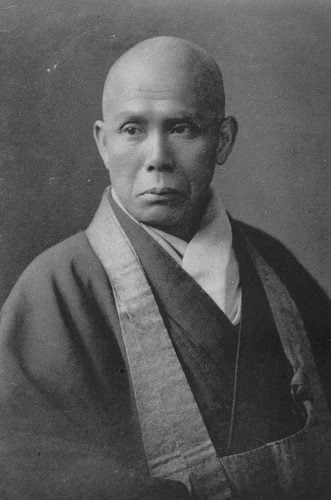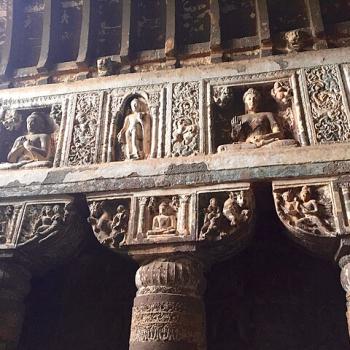The Japanese Zen master Soyen Shaku died on this day, the 29th of October, in 1919.
A prominent Rinzai master, he was invited to present a paper at the 1893 World Parliament of Religions in Chicago.
The event was captured by the great Hindu teacher Swami Vivekananda. And even among the Buddhists present, the one most remembered at the time was Sri Lankan Anagarika Dhamapala. But for some, and for the establishment of Zen in the West, the most important speaker was Soyen Shaku.
Now, I have little doubt there were people of the Zen way who arrived in the United States before the World Parliament, but their names remain unknown. The Soto missionary Hosen Isobe wouldn’t establish the first Zen temples in North America until three years after the Rinzai master’s death.
Soyen Shaku was the first Zen master we know of to visit the United States. His talk at the Parliament avoided technical terminology. But, also, cut to the heart of much of the spiritual dilemma. It’s worth a read.
And his visit had significant consequences.
While at the conference he met the philosopher and student of world religions, Paul Carus. Carus was impressed with his talk, and asked that he stay to help provide translations and other writings regarding Zen Buddhism for Open Court Publishing. The Roshi declined, but he promised to send someone. Actually two of his disciples would end up in America. One was the itinerant Zen priest Nyogen Senzaki. The other was a lay disciple, the scholar D. T. Suzuki. Through Suzuki’s voluminous work and later through the popularizations of his writings by Alan Watts, Zen began to have a place in the Western imagination.
Also of note, Sokei-an Sasaki, a successor to one of his successors was one of the first Zen teachers to come to the West to stay. Commenting on this my friend the old dharma hand Stephen Slottow adds, “Gary Snyder pointed out that Soyen Shaku’s line had far more involvement in the West than any other Rinzai line, at least for a long time. His major heir was Sokatsu Shaku, the teacher of Sokei-an and Goto Zuigan, who were both teachers of Ruth Fuller Sasaki. Snyder went to Japan under the auspices of RF Sasaki’s Zen institute and studied with Sesso Oda, Goto Zuigan’s successor. Soko Morinaga (Daishuin West) was the heir of Sesso Oda. Other Rinzai lines have become important in the West more recently, but the history of Rinzai Zen in America is intimately bound up with Soyen Shaku’s line.”
Soyen Shaku also contributed to the early writings in English with his Sermons of a Buddhist Abbot, published by Open Court in 1906, and later issued as Zen for Americans.
Here’s chapter six, “Buddhist Ethics.”













